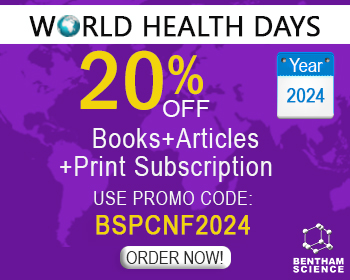Abstract
Aims: Given the current gaps of scientific knowledge and the need of efficient application of food law, this paper makes an analysis of principles of European food law for the appropriateness of applying biological activity Machine Learning prediction models to guarantee public safety.
Background: Cheminformatic methods are able to design and create predictive models with high rate of accuracy saving time, costs and animal sacrifice. It has been applied on different disciplines including nanotechnology.
Objective: Given the current gaps of scientific knowledge and the need of efficient application of food law, this paper makes an analysis of principles of European food law for the appropriateness of applying biological activity Machine Learning prediction models to guarantee public safety.
Methods: A systematic study of the regulation and the incorporation of predictive models of biological activity of nanomaterials was carried out through the analysis of the express nanotechnology regulation on foods, applicable in European Union.
Results: It is concluded Machine Learning could improve the application of nanotechnology food regulation, especially methods such as Perturbation Theory Machine Learning (PTML), given that it is aligned with principles promoted by the standards of Organization for Economic Co-operation and Development, European Union regulations and European Food Safety Authority.
Conclusion: To our best knowledge this is the first study focused on nanotechnology food regulation and it can help to support technical European Food Safety Authority Opinions for complementary information.
Keywords: Nanotechnology, Regulation, Toxicity, Safety, Cheminformatics, Machine learning.
[http://dx.doi.org/10.1016/j.futures.2006.02.017]
[http://dx.doi.org/10.1016/j.copbio.2016.11.012] [PMID: 27992831]
[http://dx.doi.org/10.3109/17435390.2013.802387] [PMID: 23641967]
[http://dx.doi.org/10.1021/nl403949h] [PMID: 24383757]
[http://dx.doi.org/10.2903/sp.efsa.2014.EN-621]
[http://dx.doi.org/10.1016/j.tifs.2013.08.006]
[http://dx.doi.org/10.1038/444267a] [PMID: 17108940]
[http://dx.doi.org/10.2903/j.efsa.2018.5088]
[http://dx.doi.org/10.2903/j.efsa.2018.5237]
[http://dx.doi.org/10.2903/j.efsa.2015.4317]
[http://dx.doi.org/10.2903/j.efsa.2011.2318]
[http://dx.doi.org/10.1002/wcms.1183] [PMID: 25285160]
[http://dx.doi.org/10.1038/nnano.2011.10] [PMID: 21317892]
[http://dx.doi.org/10.2741/E621]
[http://dx.doi.org/10.1016/j.scitotenv.2018.04.033] [PMID: 29710651]
[http://dx.doi.org/10.1371/journal.pone.0101638] [PMID: 25054864]
[http://dx.doi.org/10.1016/j.tiv.2013.12.018] [PMID: 24412539]
[http://dx.doi.org/10.1021/nl303144k] [PMID: 23039907]
[http://dx.doi.org/10.1039/c2ra21489j]
[http://dx.doi.org/10.3109/17435390.2013.796534]
[http://dx.doi.org/10.1111/j.1539-6924.2010.01438.x] [PMID: 20561263]
[http://dx.doi.org/10.1007/978-3-319-47754-1_5] [PMID: 28168667]
[http://dx.doi.org/10.2174/1568026611313140011] [PMID: 23889050]
[http://dx.doi.org/10.1021/acschemneuro.8b00083] [PMID: 29791132]
[http://dx.doi.org/10.1021/es503861x] [PMID: 25384130]
[http://dx.doi.org/10.1039/C4NR01285B] [PMID: 25083742]
[http://dx.doi.org/10.1016/j.envint.2014.08.009] [PMID: 25173945]
[http://dx.doi.org/10.1016/j.jpba.2016.01.056] [PMID: 26947319]
[http://dx.doi.org/10.2174/1568026618666180810124031] [PMID: 30095052]


























